Structural design of plastic parts: wiring harness fixtures

Posted on :Feb 27 , 2023 , By GREFEE
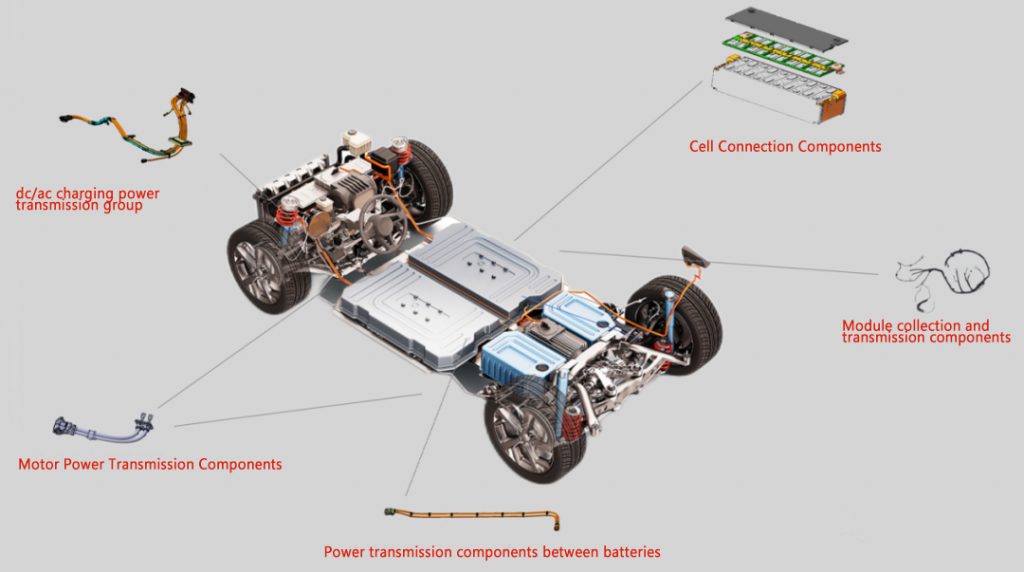
More and more electronics in our daily life, like phones, computers, and all kinds of home appliances, even the automotive product have a common, that is, having various electrical components inside the product. In the past, the electrical components were connected through wiring harnesses, with many wires and low reliability. Now, with the development of integrated circuits, chips, SMT and other technologies, each component forms a functional module on the PCB. Different modules are only connected by a small number of wire harnesses, and the reliability increases.
The connection between modules is often work through the wire harness with connectors. When using, There may be situations happening, like vibration, drop, collision and other working conditions. In addition to the quality of the connector, the reliability of module connection also relies on the fixation of connectors and wire hardness. Although most of the failure of the electrical performance of the product are caused by the poor contact due to loose connectors. While, the forced movement of harness is one of the factors leading to the loose connectors, so it is necessary to do the fixation design of harness.
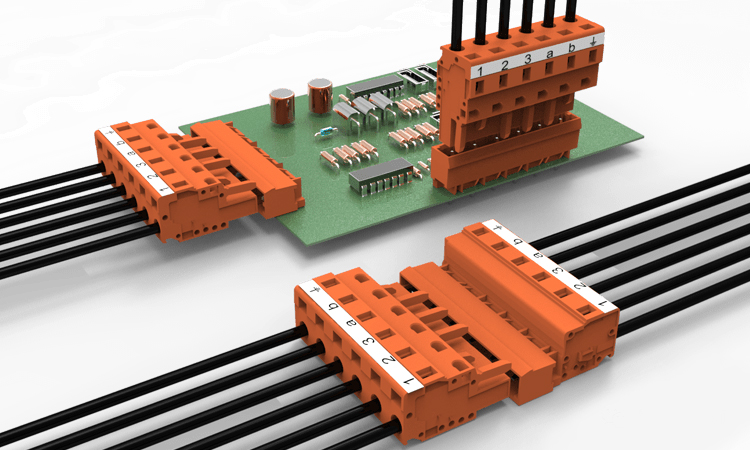
The fixation of harness is to effectively control the movement of harness. In addition to the mentioned issues help to solve the problem of loose connectors above, it also can prevent the harness from damaging when assembling and using.
1) The harness can be damaged when the shell is pressed, the skin is damaged and even the core wire is broken. See the pic below.
2) When the harness is stretched when the products with moving parts or the outer skin is wore due to fraction with other parts. See pic below.
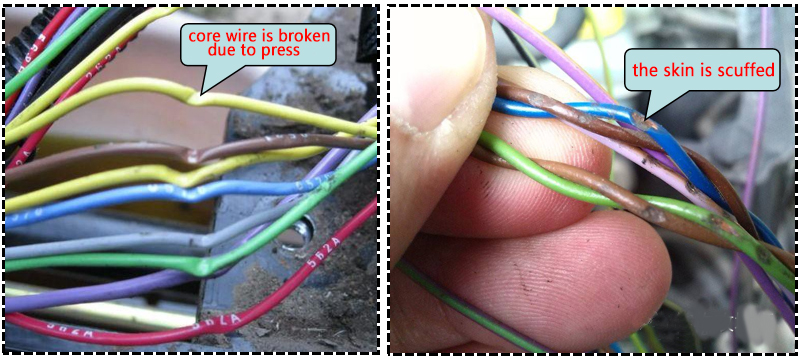
Harness layout is an important of harness 3D design, including harness routing and harness fixing.

The harness layout principle need to ensure the connivence of disassembly and repair of harness, the appearance of layout, the protective of electromagnetic interference, the reliability of the fixation. In the meantime, it should also meet up the following at the same time,
- The harness route is the shortest, ensuring the reliability of signal transmission
- The trace of harness layout should be kept away from other parts, and not exceed the rigid outline of parts.
- The surface of parts should be covered with protective mat or rubber sleeve when harness passing through parts or holes with sharp corners and sharp surfaces to avoid damaging the harness surface.
- When harness passing through the parts with moving function, a certain relaxation length allowance is required to protect the harness from pulling down within the maximum or minimum moving range. In the meantime, protective measures are required.
Introduction of harness fixing methods:
1. Ribbon fixing
Ribbon is the most common way to fix due to the high reliability and flexible operation. While, some fixing parts are required for the internal parts of products when fixing with ribbon, like holes, or buckles, etc.
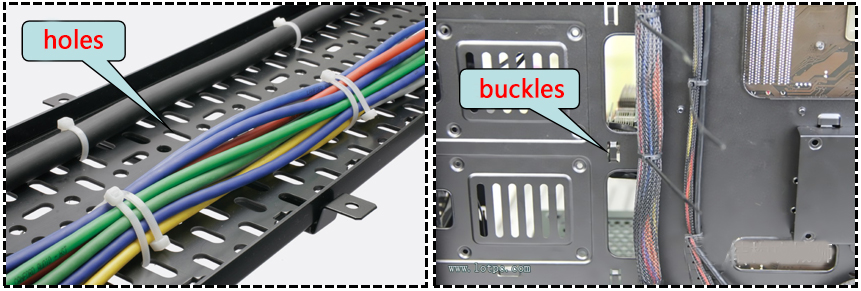
Some tie fastener is used together with the tie, so there is no need for tie fastener in parts, which is more simple.
Advantage: the ribbon sites are flexible and is convenient to assemble.
Disadvantage: the bottom side of fixing part of ribbon can be stick by the double-sided adhesive, but poor reliability, especially when vibrating or high temperature.
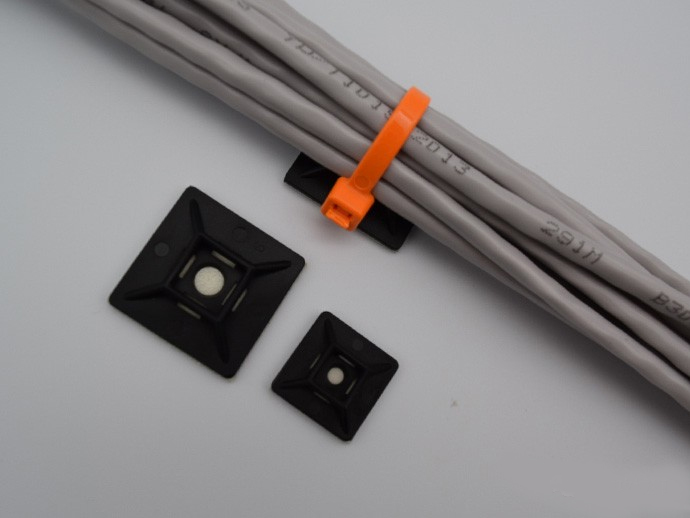
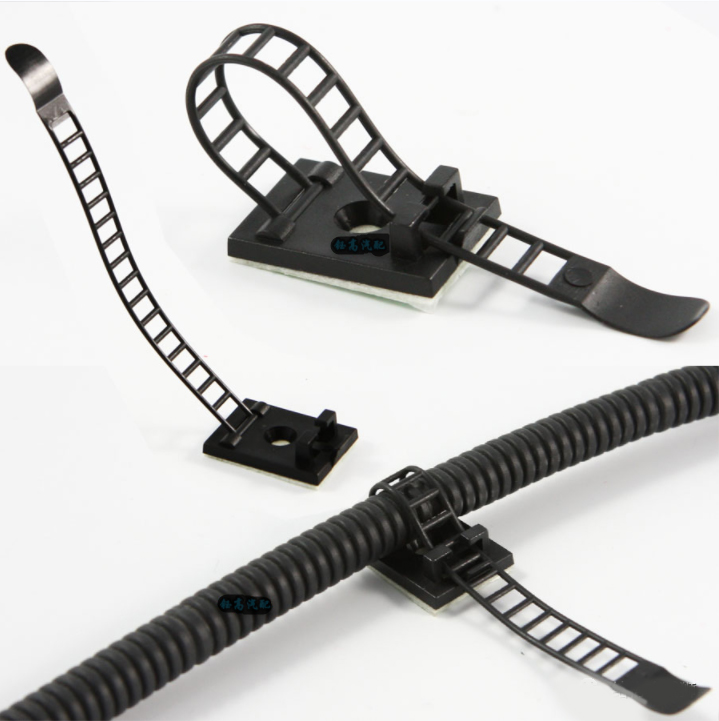
The following ones can improve the above disadvantages effectively:
1) Ribbon and plate edge buckle assembly
The ribbon and the edge buckles of plate are suitable for the situations without fixing holes or the influence of temperature. The edge, as thick as 1-3mm is suitable for sheet metal edge or plastic part inner rib edge.

2) Ribbon and plate hole buckle assembly
The ribbon and plate hole buckle assembly need a single hole reserved on the plate, which has the advantages of fast assembly and high reliability.
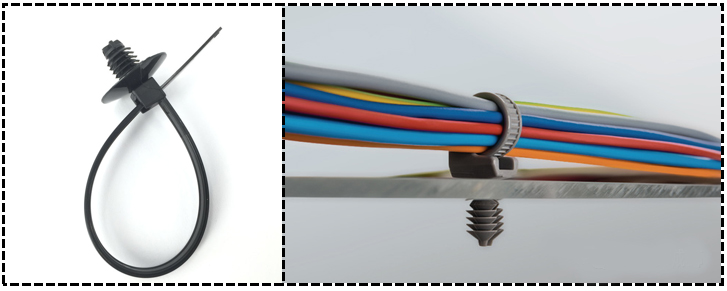
3) Ribbon and cylindrical buckle assemblies
The ribbon and cylindrical buckle assembly are suitable for structures with cylindrical bar or tube structure, which also has the advantages of fast assembly and high reliability.
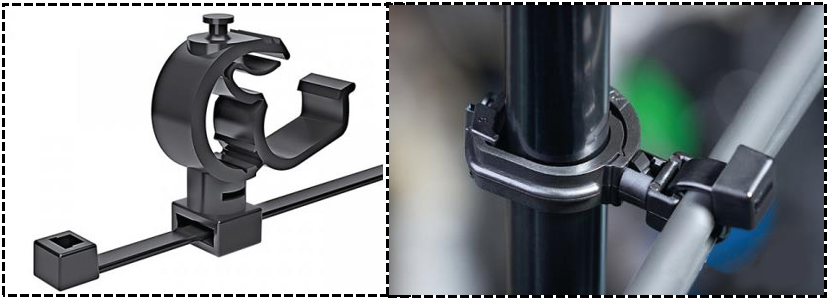
2. Wire clip
Wire clip fixing includes double-sided adhesive, buckle and threw fixing according to the assembly methods. It is easy to disassembly and can be reused.


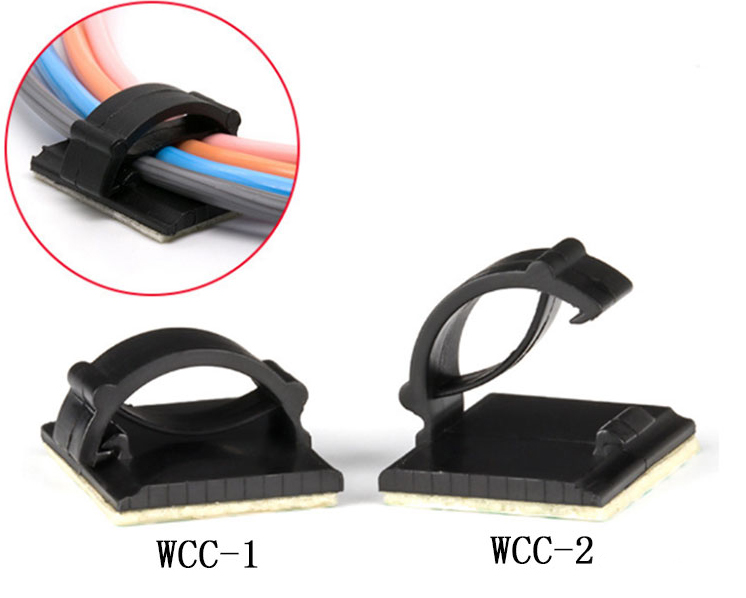

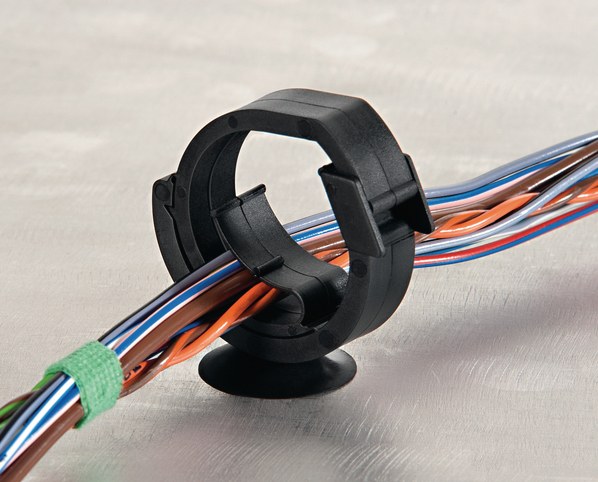
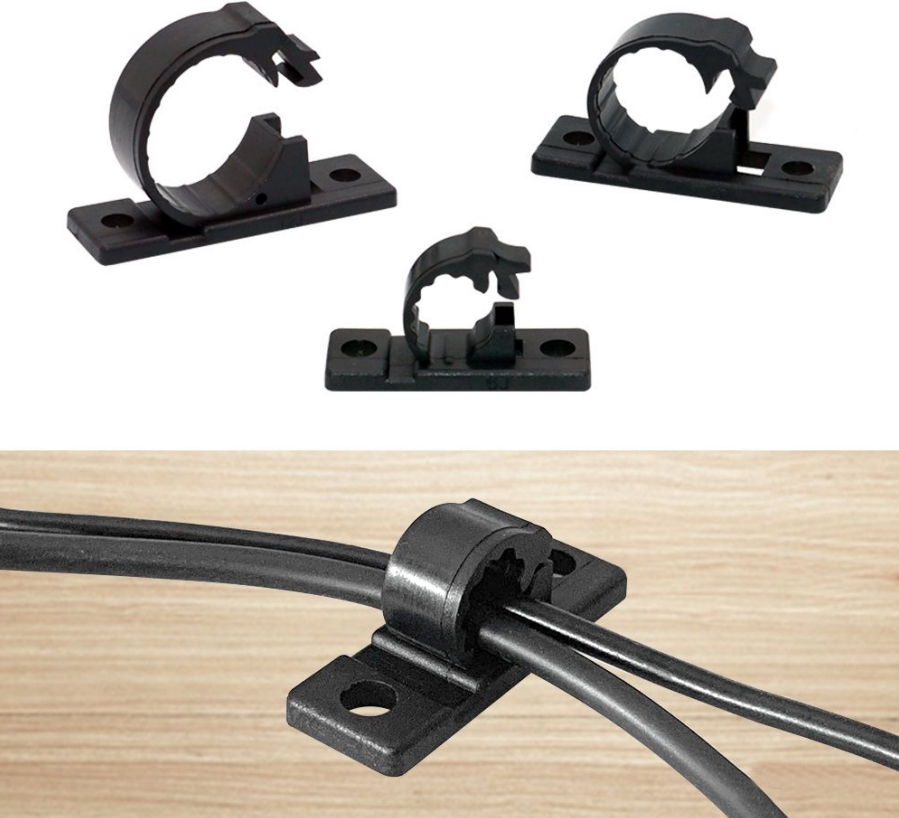
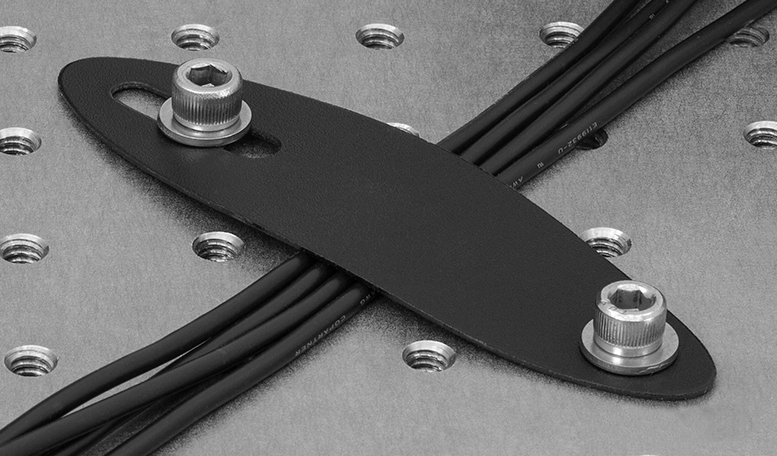
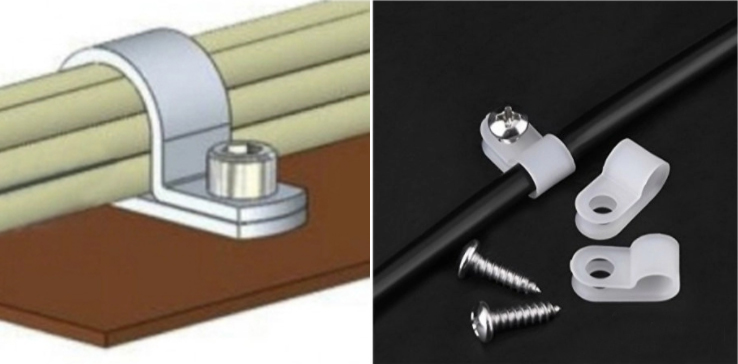
3. Plastic bracket
Sometimes, we may come across issues, like the limitation of harness installation room, requiring a special design of a separate plastic bracket to protect the harness and fixing.
4. Tape pasting
The tape fixing is also simple and convenient, but it can only tie the harness on other parts via the tape. Thus, it is not reliable, especially under poor working condition (vibration, high temperature, high moist, etc). Also, the reparability is poor. The effectiveness of tape gets low after multiple disassemble.
Things need to know for tape fixing:
1) The harness pasting and positioning need to meet up the requirements of anti-rebound as the internal rigidity/stress properties of harness will cause it return to a tension-free original state.
2) The installation of harness has right angle corner, and there should have fixing points on both sides of it. For obtuse corner, we can follow the linear distance to control in case the sharp corner inflection point.
3) Applying the pressure within the whole distance of tape, especially close to the harness. Try to expand the adhesive area of tape and material.
4) Avoid the adhesive tapes are overlapped with each other.
5) Avoid using the too long tape as it will increase the tension of tape, and the tape should be fully adhered on both sides of harness and the platfond without openings.
6) Appropriately using the tape at the branches of the harness, which can expand the adhered area of tape and platfond.
5. Slot of other parts
For harness fixing, the existing or new slot structure of other parts can be used to fix. In this case, as it is difficult to position, so it is required to mark the harness independently to facilitate assembly.
The above harness fixing methods are mainly applied into the metal sheet products as it is not suitable to have too many blocks on the metal sheets due to the modeling methods. While, it is different for plastic structure as the plastic can be made into complex structures without adding too much cost.
6. Common fixation of plastic parts harness methods
1) Slots on reinforcement
This is only suitable for limiting the two directions, x and y, but not z, so the reliability is relatively low. Mostly is used for limiting the direction of harness.




The glue can be applied to the groove of the rib, like hot melt glue, yellow glue, etc., or even the rib can be hot melted to a certain extent, so that it has a certain limit function in the Z direction.
The above method is applicable to both external and internal parts. The disadvantage is that it requires additional gluing. Obviously, the assembly step is one more step, and it is also troublesome to repair and disassemble.
The following methods can fix the Z direction restriction. At the same time, it is convenient to disassemble and assemble. The mold structure is simple and the cost is low. The disadvantage is that because the mold adopts a plug-in structure, it is only applicable to internal structural parts.





7. Fixation of FPC flexible cable
1) Double-sided adhesive


2) Single-sided adhesive


3) Hot melting

The above wire harness fixed structure is just a list of common basic structural forms, which should be flexibly used in the actual design and adjusted or improved according to the specific structure.
MORE BOLG
Insert mold in injection mold service
What are advantages and disadvantages of Zinc alloy and Aluminum alloy?
Inspection standards for injection molded partappearance
How to judge the quality of your plastic products?
Inspection standards for CNC machining
To ensure that your products are 100% qualified
Categories

Try GREFEE now,for free
We keep your uploaded files confidential and secure.



